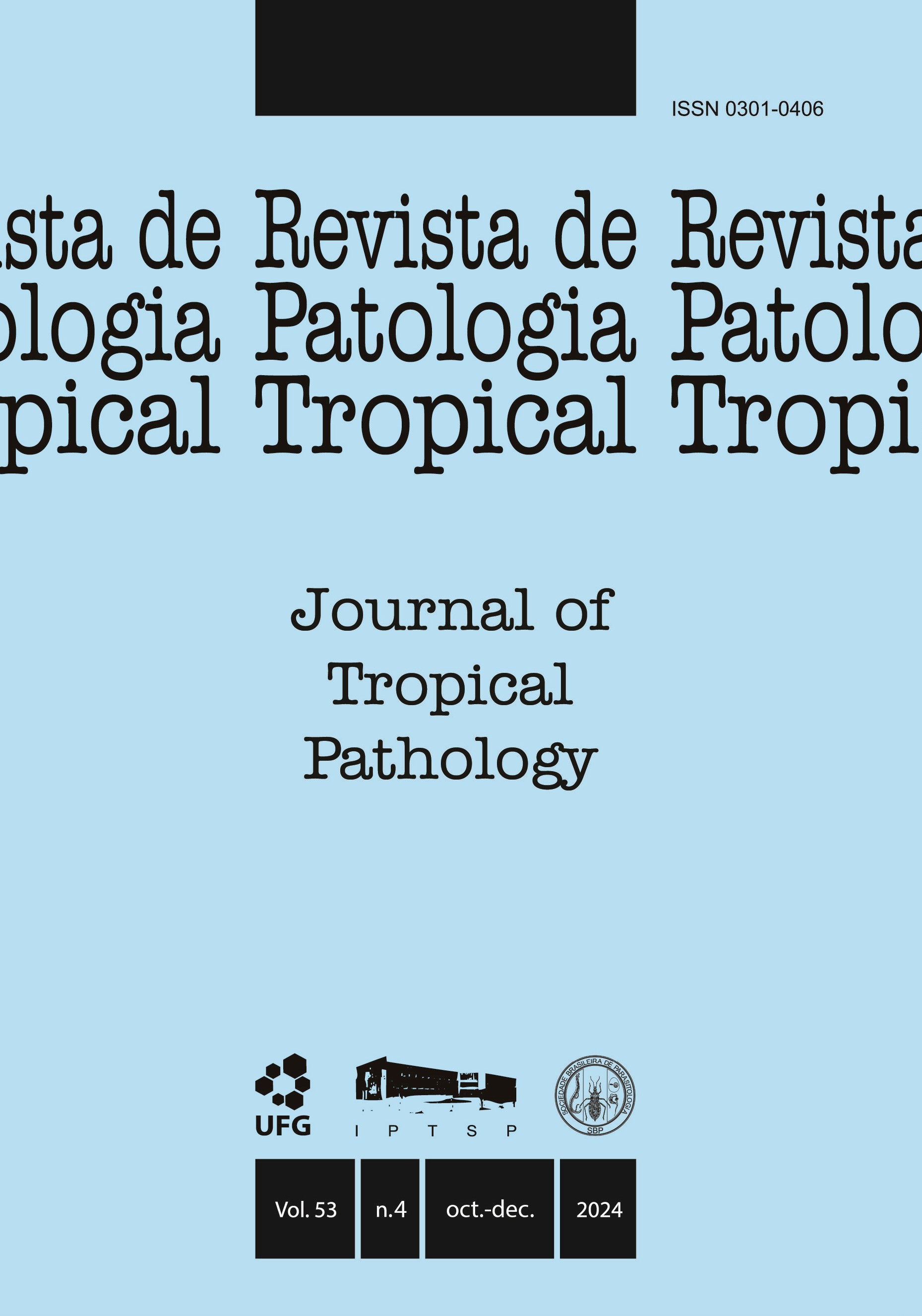Development of a dissemination prototype device for focal aedine mosquito control
DOI:
https://doi.org/10.5216/rpt.v53i4.79763Abstract
Focal control techniques are among vital tools for integrated control of aedine vectors of arboviruses to humans in the tropics and subtropics. This study sought the development of a simple dissemination device to attract Aedes aegypti adults, and the validation of this device in the laboratory and field conditions. Attractiveness of aqueous and dry substrates, in simple containers or in the prototype of a dissemination device for gravid A. aegypti to oviposit was assessed in two- or multi-choice tests in the laboratory or under field conditions in the city of Goiânia in Central Brazil. Findings emphasized the utility of a hydrogel (polyacrylamide potassium polyacrylate) as a substitute for liquid water in the device but did not confirm that any of the tested substances; acetone, lactic acid, orange oil, and bamboo leaf infusion incorporated in the gel clearly attracted gravid females to oviposit. The plastic dissemination device (total 29.5 cm height) was divided into a lower closed compartment with a water reservoir and an upper capped compartment permitting free circulation of mosquito adults. This compartment contained hydrated gel in the base, and black polyethylene terephthalate carpet covered the lateral inner surface. The device attracted A. aegypti gravid females seeking a breeding site, and females laid eggs on the gel and the carpet. Findings in laboratory and field conditions strengthen the value and utility of this device for focal applications of insecticides against this important mosquito vector.
KEY WORDS: Mosquito; Aedes aegypti; oviposition attractant; substrate
Downloads
Downloads
Published
How to Cite
Issue
Section
License
The manuscript submission must be accompanied by a letter signed by all authors stating the full name and email address, confirming that the material has not been published or is under consideration for publication elsewhere, and agreeing to transfer copyright in all media and formats for Journal of Tropical Pathology. The authors will not be paid for published articles. They are solely responsible for the content of those articles, even if the Editor holds the right to adjust them to the norms of the journal.
The reviewers will not be paid for the peer review process.

